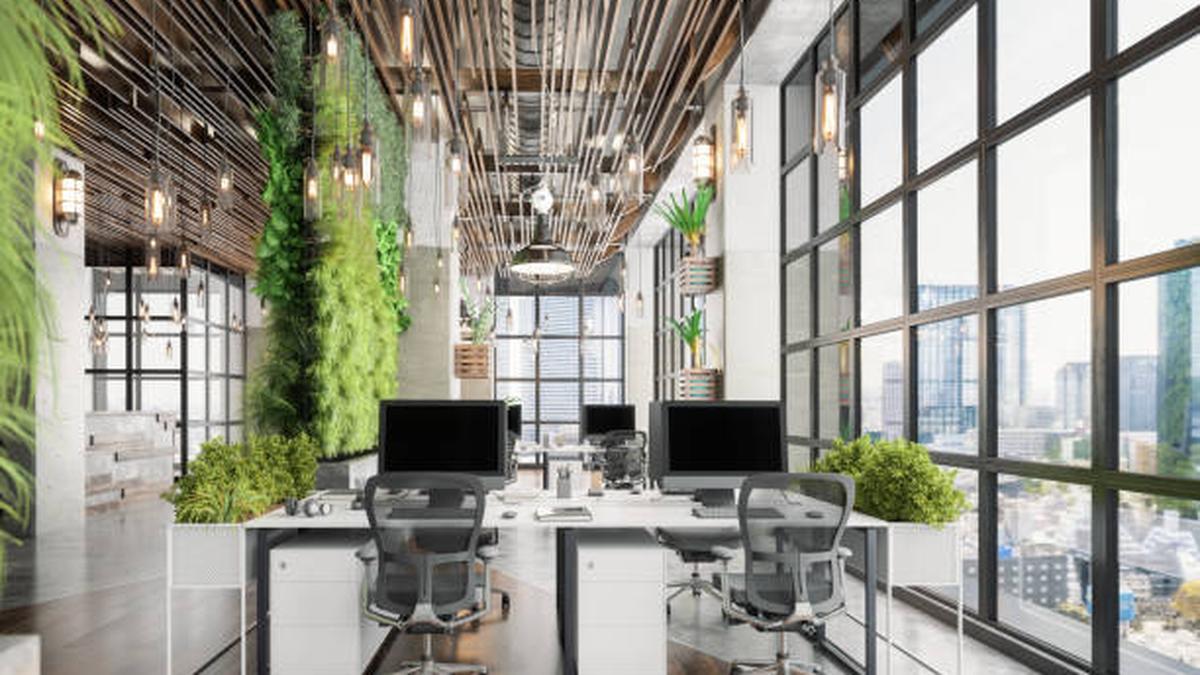
Sustainable green co-working office space.
| Photo Credit: Getty Images
Christiana Figueres, the architect of the Paris Agreement, once said, “We cannot afford to treat sustainability as a side project — it is the main project.” Her words serve as a timely reminder, especially for the commercial real estate sector, where the intersection of design, investment, and environmental responsibility is rapidly reshaping the meaning of long-term value.
Sustainability is no longer a peripheral consideration. For developers and institutional players alike, it is becoming central to how projects are envisioned, financed, and managed. According to the Thomson Reuters’ State of Corporate ESG report 2024, 71% of C-suite leaders globally now view sustainability as a competitive advantage, while 82% believe it will play an even larger role in business performance in the years ahead.
This shift is particularly evident in commercial real estate, where tenant expectations, investor strategies, and regulatory frameworks, are all converging around sustainable outcomes.
Sustainability has moved from being a boardroom agenda item to a blueprint for building. Energy-efficient and resource-optimised spaces are not just better for the planet, they also deliver clear business advantages. They reduce operating costs, increase tenant retention, and enhance long-term asset performance.
Economic signal
A recent Knight Frank report found that green-certified buildings in India command up to 10% higher rentals and enjoy 15% greater investor interest than their conventional counterparts. For developers, this is a powerful economic signal. Sustainability isn’t just a value, it is value creation.
The shift to renewable energy is another area where commercial real estate is leading transformation. Developers and institutional owners are investing in solar power, battery storage, and AI-driven energy systems to lower emissions and cut energy consumption, often reducing energy costs by as much as 70%.
Global Capability Centres (GCCs) and leading corporates — many of whom operate under robust sustainability mandates — are prioritising buildings that are renewable energy-integrated and net-zero ready. In today’s leasing conversations, sustainability alignment is often as much a differentiator as location.
Wider financial pathways
For developers, embracing sustainability also opens up wider financial pathways. Green buildings are increasingly qualifying for green bonds, sustainability-linked loans, and concessional financing. Banks and investors are no longer evaluating projects on credit metrics alone.
Global financial institutions such as International Finance Corporation (a member of the World Bank Group) are backing projects with credible renewable energy and sustainability strategies. Government incentives such as accelerated approvals, additional FSI, and tax rebates, are further reinforcing the economic case for sustainable development.
Developers are playing a catalytic role in enabling greener cities by integrating EV charging, waste management systems, water recycling, and district cooling infrastructure.
Sustainability is a reminder that every solar panel installed, every ton of emissions avoided and every sustainable choice made is a step toward more resilient cities and more valuable assets.
For developers, the path is clear: design spaces that serve both people and the planet, and profitability will follow.
The writer is MD and CEO at Brookfield Properties.
Published – May 23, 2025 04:51 pm IST



